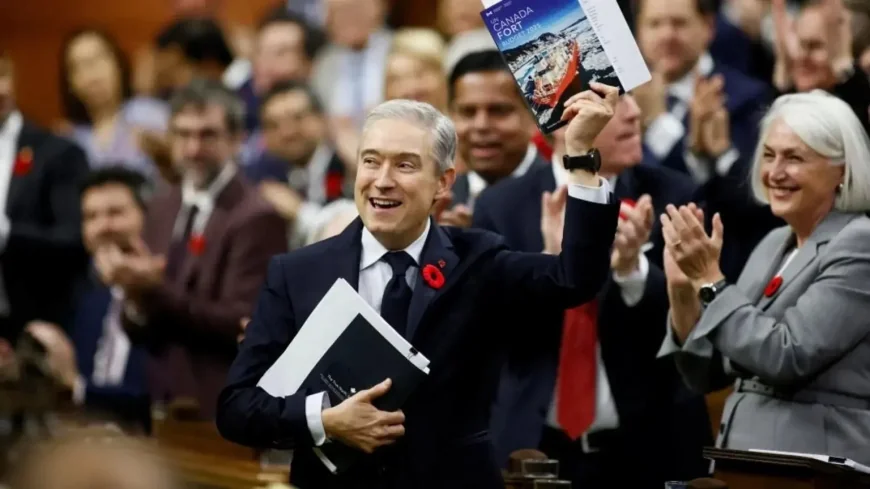Six Key Highlights from Canada’s Federal Budget
The budget was put forward on Tuesday by Canada's Finance Minister Francois-Philippe Champagne.

Canadian Prime Minister Mark Carney has unveiled his first federal budget – a blueprint for how he intends to deliver on his promise to make Canada's economy the strongest in the G7.
The ambitious plan, seen as a crucial test for the new leader and former central banker, is as much a political document as it is a spending blueprint.
It warns that Canada is undergoing a "profound transformation" not seen since the fall of the Berlin Wall, a transformation further underscored by its rapidly changing relationship with the United States, once the country's closest ally.
"There are some headwinds on the horizon. That's why we need a strong response," Finance Minister François-Philippe Champagne told reporters in Ottawa on Tuesday.
Here are six key takeaways from the spending plan:
1. Canada will have to spend – but also make sacrifices
The budget includes billions of dollars in spending that could push Canada's deficit to C$78.3 billion (£42.6 billion) – the second largest on record.
Carney and Finance Minister Champagne have defended the massive spending plan, totaling C$280 billion, calling it an investment to boost Canada's global competitiveness. They have argued that a strategic investment of funds will attract C$1 trillion in investment to Canada over the next five years.
It will provide funding for a range of areas: highways, ports, electricity grids, digital corridors, defense, housing, and initiatives aimed at boosting Canadian productivity.
But Carney also warned Canadians of necessary "sacrifices" in his plan to transform the economy, as the budget projects C$60 billion in cuts to overall spending over the next five years. These cuts stem partly from a reduction of 40,000 jobs in the public sector by the end of 2029 – a cut of roughly 10% of the workforce, due to layoffs and the widespread use of AI.
According to the budget, federal ministries could see cuts of up to 15% in the coming years, expected to save more than C$44 billion.
For the first time in Canada, the fiscal plan differentiated between operating expenses – daily government spending – and capital investments, defined as funding that helps grow the economy.
2. The country is already looking beyond the US
Due to its proximity and close cultural ties, the US has long been Canada’s largest trading partner, with roughly 70% of its trade going south.
In the wake of Trump’s tariffs and the uncertainty that came with them, Canada is looking towards Europe and Asia, with a goal of doubling non-US exports over the next decade.
Carney’s budget proposes millions of dollars in support for businesses working to develop new export markets, including help with legal costs and market research.
It also emphasizes growing cultural ties with Europe, such as exploring the possibility of Canadian participation in the Eurovision Song Contest.
While some companies are hoping to save on business costs by relocating their facilities to South America, Carney is also proposing several initiatives to make Canada more attractive. These include several measures that would reduce Canada’s marginal effective tax rate from 15.6% to 13.2%.
“This is a good message for investors,” Champagne said, adding that this rate would be lower than that of the US.
And with many US universities facing uncertain funding under the Trump administration, the spending plan includes C$1.3 billion to attract international researchers to Canadian universities and fund their research.
What's Your Reaction?
 Like
0
Like
0
 Dislike
0
Dislike
0
 Love
0
Love
0
 Funny
0
Funny
0
 Angry
0
Angry
0
 Sad
0
Sad
0
 Wow
0
Wow
0











































